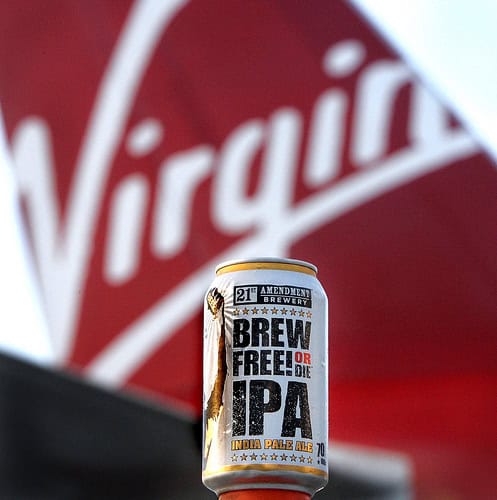Tag: shisler’s cheese house
Common Questions About Cheese
As cheese lovers, it’s easy to know all about the different cheeses available however, there are some simple wonders and questions we are left with regarding things like presentation and storage so here are some quick answers to help all your cheese queries.
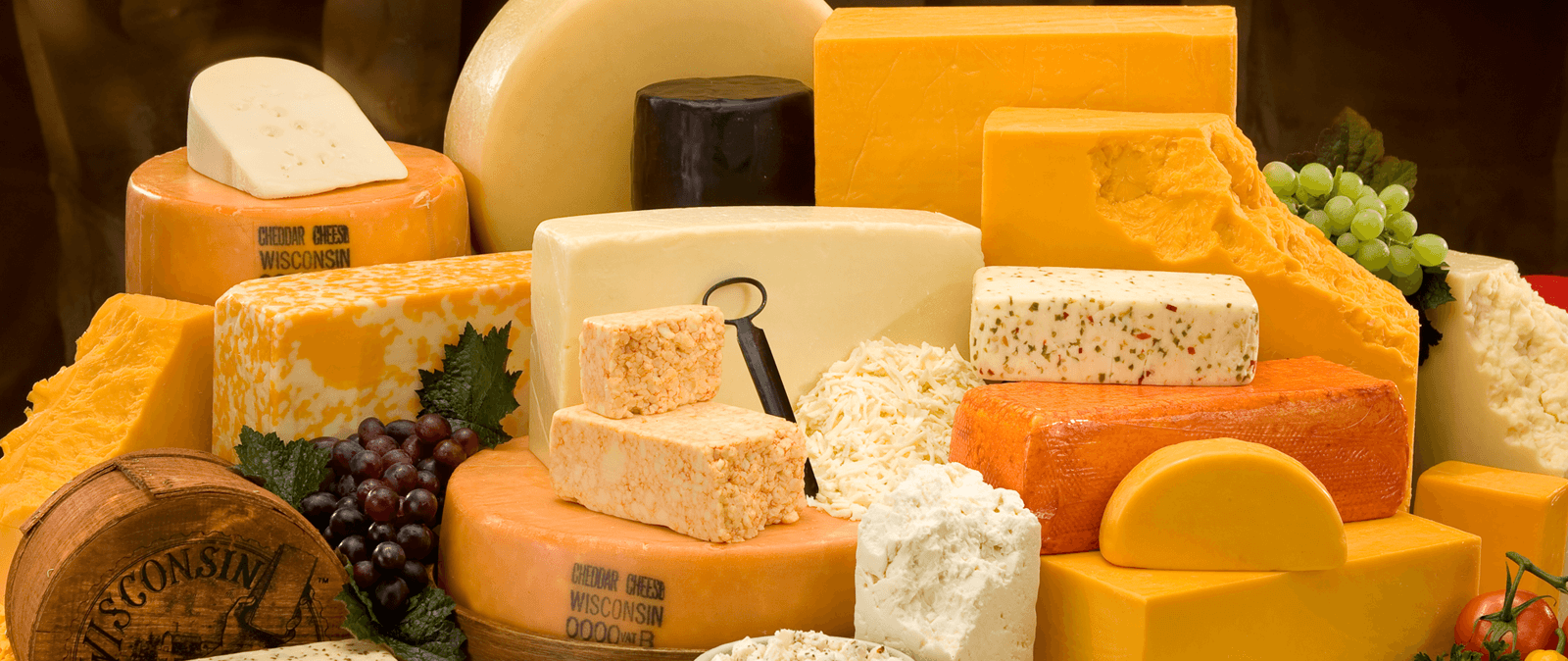
Can You Eat Cheese When You’re On A Diet?
If you enjoy cheese in moderation, it can easily fit into a healthy diet. In fact, cheese is a good source of essential nutrients such as calcium, protein and Vitamin A. These nutrients are important for keeping your skin and eyes healthy, your bones and teeth strong, and your muscles growing. Studies have shown that if you eat a piece of cheese after eating a meal or a sugary snack, it can restore minerals of tooth enamel and protect your teeth against cavities.
Which Cheeses Have The Lowest And Highest Levels of Fat?
Every cheese will come with its own nutritional profile which will be displayed on the label. Labels make it easier for if you are watching your fat intake as you can refer to it for the cheese’s fat facts. However, here are some general guidelines for if you find yourself at a cheese dinner party where there are no labels:
Low-Fat Cheeses: Cheeses like cottage cheese, Quark, Ricotta, and Edam. Also, any cheeses which are labeled with low-fat, reduced-fat, and even fat-free versions of your favorite cheeses are readily available.
Medium Fat Cheeses: These cheeses include Camembert, Brie, Emmental, Edam, Feta, and Mozzarella, as well as a lot of process cheeses and soft goat’s milk cheeses.
High Fat Cheeses: Cheeses such as Cheddar, Cheshire, Caerphilly, Gouda, Gruyere, Parmesan, and Stilton are all high in fat but deliciously addictive!
Why Doesn’t Reduced-Fat Cheese Melt Well?
A lot of reduced-fat cheeses are made with added gums and stabilizers to help stimulate the flavor and texture to make them similar to the full-fat varieties. While these cheeses are great for shredding into salads, snacking on, or topping sandwiches, they do not perform well when heated. The reason for this is because of the lower amount of fat in the cheese. Without a decent amount of fat, the heated cheese won’t melt into a creamy texture, it will instead be turned into a hardened, clumpy, stringy mess. The best way to avoid that is to just use a full-fat variety for melting, because a little does go a long way, so it shouldn’t be too bad for you.
How Long Should You Keep Cheese?
No matter how well you store your cheese, it will still continue to ripen in your refrigerator. This is why it is especially important to consume soft cheeses soon after you have purchased them. Once you open soft cheeses, they will only keep for around one to two weeks.
On the other hand, harder cheeses tend to remain fresher for longer. Blue cheeses will keep for one to four weeks, cheddars and swiss cheeses will keep for several weeks, and hard cheeses are usually good to eat for several months.
Also, large pieces of cheese keep a lot longer than shredded cheese, which is why labels usually state to consume shortly after opening the packet.
What Is Processed Cheese?
It was first invented in 1911 by Switzerland’s Walter Gerber. Then, in 1916, James L. Kraft applied for his method for his processed cheese to be patented. A lot of processed cheeses today are sold in individually wrapped sandwich slices, which are great for melting into burgers, but definitely not for serving with fine wine!
Processed cheeses usually consist of a blend of fresh and aged cheeses combined with some preservatives, coloring, and emulsifiers to make them smooth and ease melting. They are then pasteurized to stop the ripening process which ultimately gives the cheese a longer shelf life. This does come at some sacrifice though because processed cheese definitely lacks the distinctive flavor and texture that natural cheese has.
Is It Best To Serve Cheese Chilled Or At Room Temperature?
It is usual that you will serve cream cheeses like Ricotta, Boursin and Quark chilled, however all the other variety of cheese are best enjoyed at room temperature. Room temperature is when cheese is at its best level of flavor, texture, and aroma. If you eat cheese too cold, you are basically missing out, so just remove cheese from the refrigerator 30 minutes before serving and enjoy!
Can You Freeze Cheese?
It is fine to freeze cheese, it can be frozen to make it last a lot longer. You do however have to understand that cheese which is frozen will go through some textural changes. Softer cheeses may separate, and harder cheeses may become crumbly. However, if you are going to use the frozen cheese in cooked dishes, you probably won’t notice any difference.
A quick tip to freezing cheese is to double wrap it and only keep it in the freezer for up to six months. When you are ready to take it out the freezer, thaw it in the refrigerator and use the cheese within a few days.
All About Chardonnay!
If you’re a lover of wine, you’ve most likely had a glass of Chardonnay at some point in your life. However, the Chardonnay you most recently tried is probably a lot different to the one your friend drinks after work. This is because Chardonnay can vary so much as it is the most versatile varieties in the entire world. It has a rich history and flavor profile which ranges at every point of the spectrum. Even though it is one of the most popular varieties in the world, it can be one of the hardest to understand and wrap your mind around.
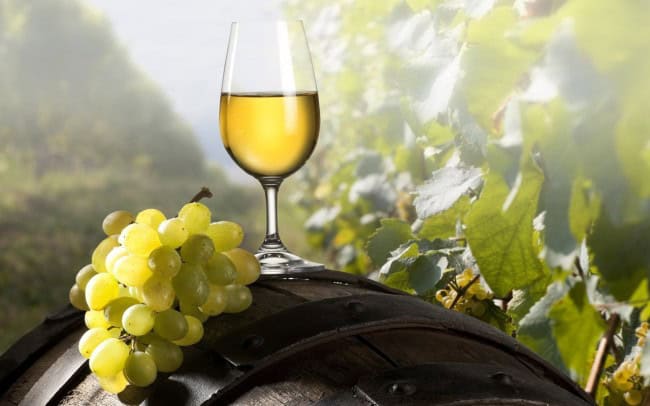
Here is everything you have ever wondered about Chardonnay:
Where does Chardonnay come from?
Chardonnay’s origin is in the eastern part of France- Burgundy. It is known as the best region for growing the variety, in the world.
Is Chardonnay a grape or a region?
It is a green-skinned grape variety that is used to create white wines in regions all around the world.
Where is Chardonnay grown?
Every wine-producing region of the world grows Chardonnay currently. A lot of the popular regions are Burgundy, California, Austrailia and Washington, even though the grape is also grown in many other regions.
Where are the most renowned regions for Chardonnay?
The most renowned region is believed to be its birthplace-Burgundy. It produces the best Chardonnay in the world, notably within the Chablis and Côte de Beaune areas. In Côte de Beaune, many Grands Crus, such as Montrachet, Corton, and Charlemagne, are some of the most highly regarded Chardonnay.
What is the difference between Burgundy and Chablis?
Chablis is a wine district situated within the Burgundy region. It is the northernmost zone in Burgundy and Chardonnay produced in Chablis has much more acidity, wet rock notes, and less fruity flavors than Chardonnay grown in warmer areas like Côte de Beaune.
What kind of wine does Chardonnay make?
Chardonnay is commonly known for its dry white wines that again, are all over the spectrum in flavor. It can range from super high-acid to rich, full-bodied wines, that’s what makes Chardonnay so diverse and unique.
What is Oak Chardonnay?
During the end of the 20h century, “butter bomb” Chardonnay became increasingly popular, which meant taking the juice and aging it in new oak to impart creamy, “buttery” flavors. However, in today’s society, the love for Oak Chardonnay is declining, with people gravitating more towards balanced bottles.
How much does Chardonnay cost?
The cost can range all over the spectrum, with the cheapest bottles being as little as $5 and bottles like Grands Crus going for hundreds, if not thousands of dollars.
Serving Port With Cheese
Cheese is the perfect course of a special meal and a delicious snack at any other time. It can be paired with so much different, complimenting food and drinks, what made port a good cheese pairing?

Facts About Port
The name “Port” comes from its place of origin, Oporto, in Portugal. The Methuen Treaties of 1703 made it so Portugal was in the Grand Alliance in the war of the Spanish Succession. In return for allowing English cloth free access to the Portuguese markets, Portuguese wines had to be cheaper than French wines to make sure the constant supply of wine was quality wine.
No other country are allowed to call their fortified wines port because the vineyards in Douro Valley are the only place where the grapes for port are grown.
The best temperature to serve port is 55-65F, although, white port is usually served chills and tawny port can be served at cooler temperatures as well.
There are many different kinds of port, around 9 styles, so, which port is best to serve with our favorite cheese?
Port
The finest ports are vintage. The first vintage ports were declared in 1734 and it is still an ongoing term used on the port which is produced in years when grape production is described as ‘exceptional’. LBV is an abbreviation of Late Bottled Vintage and is filtered and bottled vintage port.
Unfiltered ports are called ‘crusted’, they need careful decanting to get rid of any sediment before they are served.
White port is a lot newer than other styles of ports, first produced in 1934 and the dry type is popular as an aperitif.
The Traditions of Serving Port
The British Naval tradition of serving port was that it should literally be served from ‘port to port’ at the end of dinner. Another well known port-passing ceremony is within the armed force and went as follows:
-The port is placed in front of the host.
– The host serves guests to the right.
– The host then passes port to guest on the left.
– The remaining guests then pour their own port and pass it to their left until it is returned to the host.
This is the accepted way to serve port during formal dinners and it is thought that if you were to ask for the port to be passed to you, you’re considered to show a lack of social standing.
Which Cheese Is Best To Serve With Port?
The cheese which is most popular with port is commonly Stilton.
Stilton is salty, creamy and acidic whereas Port is a heavy, sweet fortified wine. This makes for a good pairing because the flavors and textures compliment each other greatly and both have been available for hundreds of years.
A lot of good blue cheeses also have the strength to challenge the dominant flavors of port so that neither of them overpowers one another. So if you are not a fan of Stilton, most blue cheeses are a good option, the best thing to do is visit your local cheese store such as Shisler’s Cheese House and ask for recommendations.
An even more bizarre thing to do with port and cheese is serving white port with cream cheese! You wouldn’t think of that, would you? The best thing to do is explore with flavors because that is where it ultimately all begins and is how experts are still creating new cheeses to this day!
Exploring Asian Cheeses
It is commonly assumed that cheese is popular all over the world, but that is not the case. It may be hard to imagine the world without cheese, but in many Asian countries, cheese is not a food with much cultural or culinary significance.

For example, in China, milk, and dairy products have been historically rare. The biggest reason behind this is the high rate of lactose intolerance, along with other reasons such as poor climate, and storage and transportation issues.
In this modern day, however, the technological advancements are changing times in Asia, enabling the cheese market to grow. One day, there might be a whole range of delicious cheeses available throughout Asia, but for now, let’s explore some varieties from current and notable Asian cheese-producing countries. These countries include the Philippines and India, and whether it is made from yak’s milk, blended with confections or enjoyed fresh, the cheese in Asia may be little, but they are unique nonetheless.
Philippines
Kesong Puti:
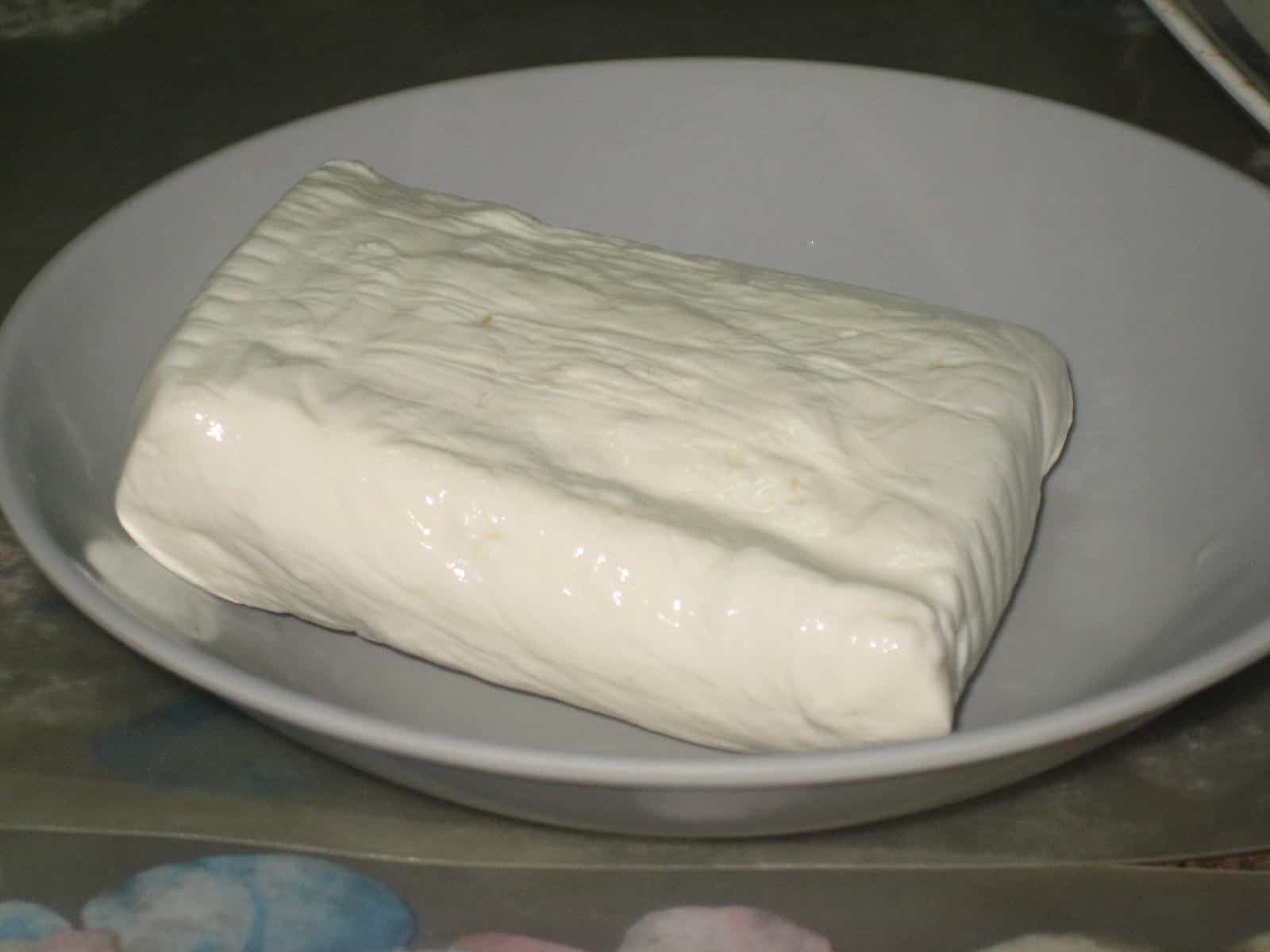
This cheese is also known as Filipino cottage cheese. It is a fresh cheese which is made from rennet, salt and unskimmed milk of carabao, which is a species of Southeast Asian water buffalo. Kesong Puti is a soft cheese which is white colored with salty, but sometimes sour flavors. Its origin is in the provinces of Laguna, Samar, Bulacan, Cebu and it remains fairly popular in those areas as a breakfast food. Common pairings with this cheese are a freshly baked piece of local bread called “pan de sal”.
India
Bandel (Bandal):
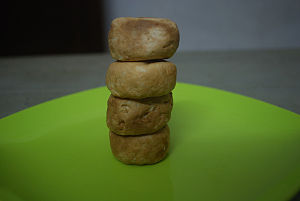
Bandel is a soft, unripened salted cheese which gets its name from the place it originates- Bandel. This cheese is made out of cow’s milk, and they use lemon juice to separate the curds from the whey. It is then shaped and drained into baskets and smoked. Bandel is sold in circular flats immediately after production and is fresh and aromatic because of that.
Paneer (Panir):
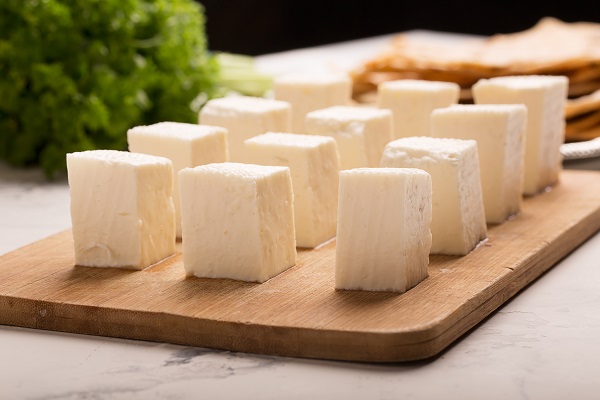
Perhaps the most well known of all the Asian cheese, this traditional cheese is semi-soft and made from cow’s milk. Traditionally used in Indian cuisine, the process of making Paneer does not involve rennet because cows are sacred to Hindus. It is also unaged, acid-set and is completely vegetarian. A lot of curry dishes include Paneer or it is wrapped in dough and fried for snacks because it is high in protein. The cheese is similar in texture to ricotta or tofu and acts as a perfect meat substitute for vegetarians.
Nepal and Tibet
Chhena (Chhana):

Commonly found in Nepal, Bangladesh, Chhena is a unripened, fresh curd cheese made from either water buffalo milk or cows milk. The process of crafting Chhena is similar to that of Italian ricotta, where the cheese is acid-coagulated. It is often used as a dessert cheese because it is very soft and smooth. Sweet desserts such as resgulla and semolina commonly include Chhena as an ingredient.
Tibet:
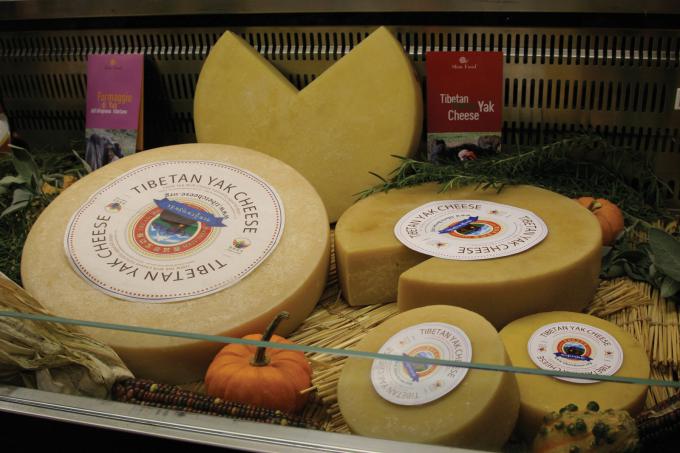
Tibet is crafted from yak’s milk. It is semi-hard and gets its name from the plateau region of Central Asia where it is made. The cheese is molded, pressed and dried in natural sun and wind. The taste is extremely strong.
Ragya Yak:

This unique cheese is crafted in Nepal by Tibetan nomads. It is an aged dri’s milk (female yak) cheese which is firm and slightly granular. The color is greenish-yellow and can be mild to medium in strength with flavors similar to goat’s milk Ibores cheese from Spain. There is only one time period of the year this cheese is made- from the end of June to early September. The aroma is mild and nutty with the rind offering just a hint of spice.
Japan
Sakura:
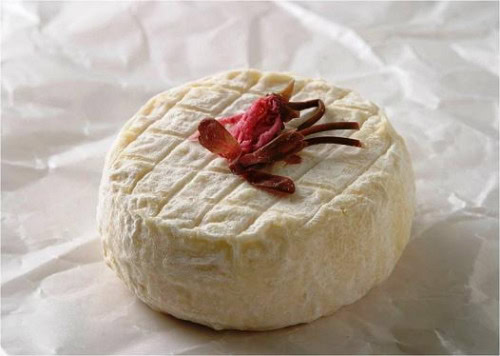
This soft cheese is produced on the island of Hokkaido and is the first widely acclaimed variety from the Asian country of Japan. It is so popular that it even won a gold medal at the Mountain Cheese Olympics in Switzerland. Sakura is creamy white with flavors of mountain cherry leaves, which is also where it gets its name from because Sakura translates from “cherry blossom” in Japenese.
Which Red Wines Are Best Chilled?

Source: tastingtable.com/wine/
The debate about chilling red wine has been going on for many years, it is almost impossible to get through spring and summer without someone bringing it up. Even though it may seem like a sin breaking the age old tradition of cold whites and warm reds, drinking chilled red wine can be a great and refreshing way to explore these wines into the summer months. Even though the process is as simple as putting a bottle on ice and calling it a day, there are a few helpful tips that an make drinking chilled red wine even better!
You may be asking- why even chill red wines? For the most simple reason: chilled wines are refreshing, especially in the blazing heat! This is the exact same reason that iced coffee and tea exists, it doesn’t feel right drinking a hot beverage when it is blistering hot outside, just like it isn’t refreshing drinking warm wine in heat. Another good thing to chilling red wines is that it brings out a wine’s acidity and heightens fruity, fresh aromas.
Chilled red wine does truly mean “chilled”, and not cold; there’s actually a difference between a cooler wine and an ice-cold wine. This isn’t just for red wine either, it goes for all wines. When a wine is at fridge temperature, it can actually be too cold, it subdues the aromas and flavors and basically strips a wine of all its character. A good guide to temperature is 50-55 degrees, or for an easier guide, take the wine out of the fridge 15 minutes before serving or put it in the fridge 45 minutes before serving. If you need it ready any sooner, a bucket of ice water for 6-7 minutes will make the wine good to go.
So which wines are best chilled? The best way to determine is the structure of the wine. Light-bodied, low-tannin, acid-driven wines are the best reds to chill. Fruity wines are also great to chill because the colder temperature makes the flavors pop, but the more earthy wines can be interesting when chilled as well. The most commonly chilled red wines are Pinot Noir and Gamay from Beaujolais, but wines like Cabernet Franc from the Loire Valley, Zweigelt from Austria and Barbera from Piedmont can also be amazingly delicious when chilled.
You may be thinking if you’re a lover of full-bodied wines, are you not allowed to chill your favorite wines? Is it a good idea to fully chill full-bodied reds? Of course, it is! It may be common to chill light reds, but full-bodied wines can also be just as good when chilled. The cold temperature can heighten the structure of the wine, although wines with a high level of tannin can come unpleasant so it is best to look for full-bodied wines with less tannin and more fruit, such as Malbec and Zinfandel. With reds, it is definitely not advisable to drink them straight out of an ice bucket, but more chilled in the fridge for 15 minutes before serving. The light chills will then make the flavor pop without heightening the unpleasant tannins.
The basic thing to remember is that chilled reds are a thing, it just depends on the wine, how chilled you make them.
The Probiotics In Raw Milk Cheese Are Proven Very Beneficial
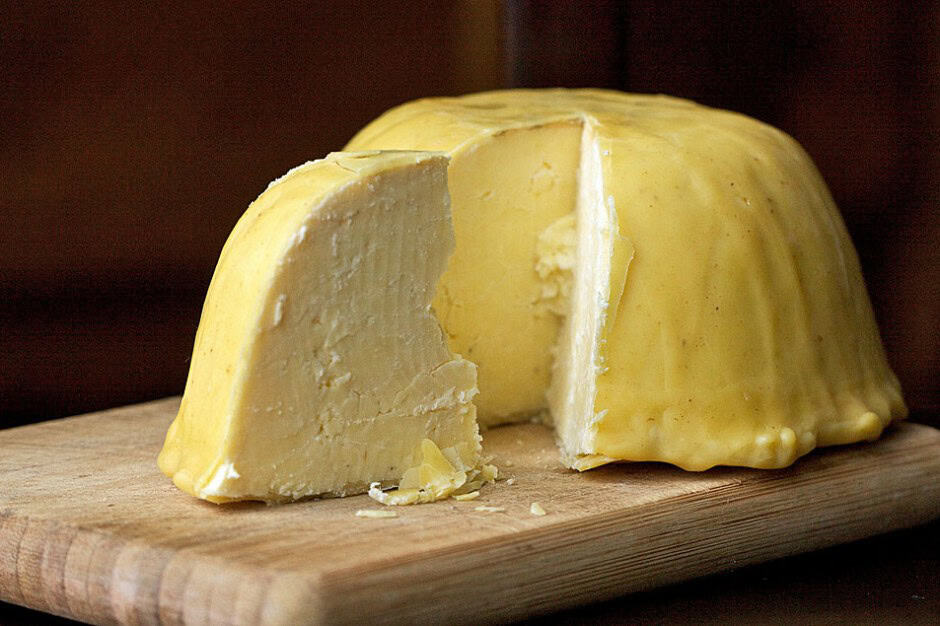
Image Source: barfblog.com/tags/raw-milk-cheese/
Despite the controversy, raw milk cheese just may be the perfect food. It offers pretty much all the nutrition you need, with full distribution of amino acids, balanced calories and a huge amount of probiotics which are so good for your body.
The word ‘probiotics’ itself actually means “for life”, which means we cannot sustain our lives without these vital allies. They are an extremely beneficial bacteria that we all have and need for our bowels and intestinal tracts to function smoothly, and so much more. It is said that raw milk cheeses have a wider diversity of bacteria, yeasts, and molds, which ultimately contribute to a healthy gut.
Raw milk cheese is not only good for us but it tastes incredibly delicious, with its richness and complexity of flavors. The best cheese starts with high-quality milk. To achieve this, it must come from healthy cows that feed on lush grass. When it comes to raw milk cheeses, the milk is superlative because the animals have been grazing on pasture.
Even though pasteurization heat-treats milk, which kills pathogens such as Listeria and E. Coli, Laws still stipulate that raw milk cheese in the U.S. must be aged for a minimum of 60 days, regardless of if it is produced domestically or imported from abroad.
The Power Of Probiotics

Image Source: chinesemedicinedoc.com/probiotics-strains-are-important/
Probiotics are proven to play an important role in maintaining healthy digestion and supporting a strong immune system. With the overuse of antibiotics, children often have compromised microbiomes and probiotics may be the key to restoring the healthy gut.
There are also studies that show that pregnant women who enjoy farmstead milk and cheese products throughout their term have children with fewer allergies, asthma and wheezing than those who do not enjoy these foods. Probiotics may also help decrease stress, prevent obesity and regulate weight. There are also studies that suggest that they also protect against respiratory infections.
So, with all these advantages to probiotics and raw milk cheese containing many, it is important to eat it, despite the controversy of raw milk cheese being bad for you. Raw milk cheese is also extremely delicious, so that alone is a plus.
The Best Low-Calorie Wine

Image Source: mohawkvalleywinery.com
Summer is closing in fast and we all want that ‘bikini body’… but we also love to drink wine. Usually losing weight involves completely ridding our lives of all alcoholic drinks. However, we all know that we can’t resist a delicious glass of wine after a long day or even just on a glorious sunny day. So, rather than trying to go cold turkey, why not try this perfect resolution of easing into summer with some low-calorie, weight-loss friendly wines?
Slim wine wines or skinny wines are definitely not the answer, you’d actually be surprised to know that there are plenty of ‘hidden’ low-calorie bottles that can be found on the shelf of your local wine shop. The two main things that contribute to wine being calorific are alcohol and sugar. With this, dry wines are the least calorific than those wines with residual sugar, and wines with lower alcohol content are also lower in calories which are why wine can be more diet-friendly than liquor-based drinks. The serving size may be larger, but wine is lower in alcohol than liquor, and most cocktails require mixers that add even more calories as well. An easy guideline would be to seek out bottles which are completely dry and contain and ABV of 12 percent or less. It doesn’t matter what type of mine, no option will be calorie free, the key is moderation.
For those sparkling wine lovers, you’ll be surprised to know that sparkling wine, in general, is the lowest calorie option for them all. Sparkling wine is usually lower in alcohol as they tend to be produced in cooler climates, and cooler climates generally mean lower-alcohol wines. Also, a lot of bottles have a sweetness level ‘key’ on the label. Lower dosage equals lower added sugar, so anything with the label of “brut nature,” “brut zero,” or “extra brut” is sure to be bone dry.
White wine lovers also don’t need to worry as white wine is the second lowest calorie wine available. They are definitely lower in alcohol than reds, and many of them fall under 12 percent ABV or less. Residual sugar, however, is something to watch for in white wines as many single-digit ABV bottles have a lot more residual sugar, which isn’t the greatest because sweet wines have around 30 more calories per serving than their dry counterparts.
The question you may be thinking right now is: does this mean that red wine drinkers need to drink something else altogether? Absolutely not. Although red wines tend to be fuller-bodied and have a higher ABV than white and sparkling wines, there are still healthy red wine options available. The best thing to do is look for bottles that are less than 13 percent ABV, the cooler climates offer the best options for this. The good thing about choosing red is that you don’t have to worry about sugar, as nearly all red wines are dry. Though, heavy red lovers may have to forgo their Merlots.. just while working on that summer body. A small sacrifice is much better than no wine at all though, that is for sure.
Calorie-Friendly Ideas
White Wines
Dry Riesling, Muscadet, and Picpoul.
Sparkling Wines
Cava, Champagne, and Crémant.
Red Wines
Schiava, Gamay, Barbera, and Pinot Noir.
Soul Food- Cheesy Mashed Potatoes
Mashed potatoes are the staple to any family get together. Perhaps you’re going through a hard time or are too busy to cook something huge; that’s where mashed potatoes come in handy, especially cheesy ones!

The specialty aligot dish will have you drooling. Aligot is mashed potatoes which are thickened with cheese and will lend a hand to being that little cushion of comfort during a hard time or will make a perfect dish to bring along to gatherings.
Ideally, to make aligot, you will need a ricer, but you could use a food processor. The only downside to using a food processor is that you may risk the potatoes ending up as an unpleasant gooey texture. Besides, there is nothing more satisfying than pushing down on the ricer and seeing the hot, tender potatoes run through the tiny holes being transformed into little noodles. Plus, you don’t have to worry about lumps!
Aligot is a delicacy from France and it is traditionally made with tomme fraîche or unripened Cantal, but both of those cheeses are difficult to find in the U.S. That isn’t the end of the world though, any cheese that melts will be perfect for the dish. Great Aligot, in particular, is made with fresh mozzarella, Comté, Emmental, and Gruyère. When it comes to potatoes, ratte potatoes can be a good use, but come with an expensive price tag as they’re a variety from France.
A good way to make Aligot is by boiling the potatoes whole and then peeling them while hot. Then, you push the potatoes through the ricer and then cover the potatoes in cold butter over the heat and then add some milk or cream, whisking it until it is airy and dreamy. Add the mix of the cheese and more milk and whip the potatoes with speed and consistency as you add the cheese, building up the stringiness as it melts. Stringiness is the whole point of Aligot because it takes on all the qualities of melted cheese but remains the intended mashed potatoes.
These mashed potatoes usually take around 20 minutes to cook, which can give you time to prepare the rest of the meal or crack open that bottle of wine you’ve been craving all day!
Here’s a delicious recipe for Aligot!
What You Need
4 large potatoes
1/2 cup heavy cream
1/4 cup milk
1 clove garlic, grated
1 cup grated cheese of your choice
Kosher salt
Freshly ground black pepper
What To Do
1.Cover the potatoes with cold water in a large pot. Bring to a boil, salt the water, and cook until the potatoes are fork tender. Drain, then peel.
2.Add the cream, milk, and garlic to the pot. Rice the potatoes into the mixture, and stir with a wooden spoon to combine. Add the cheese, salt, and pepper, and beat to combine. Serve and enjoy!
Ice Wine- Is It Worth The Buy?
Ice wine might be one of the sweetest mistakes nature has ever made. It is difficult to think how anyone would purposely go out to make ice wine because although it might look like it, ice wine is one of the hardest, tedious wines to produce. Just imagine being outside in sub-zero temperatures, in the dark, trying to harvest frozen grapes.

Image Source: winelifetoday.com
Ice wine is one of the wine treasures of the world, despite some claiming to hate it. It may have almost double the sweetness of your average soda, but once you taste a really decent ice wine, it’ll be hard not to love.
The History Of Ice Wine
The history of ice wine is that during a cold winter in Franken, Germany, in 1794, winemakers were forced to create a product from the grapes available for harvest. The result of this was wines that had a particularly high sugar content, along with amazing flavor. This technique then became popularized in Germany.
How Ice Wine Is Made
The secret to creating ice wine is by processing frozen grapes at around 20 degrees Fahrenheit. The frozen grapes are then transferred into a grape crusher and then into a grape press. Only around 10-20% of the liquid is used for the ice wine and it can take anywhere between 3-6 months for the fermentation process because the juice is so sweet. Once complete, the wines have around 10% ABV and a sweetness range of 160-220 g/L of RS.
The Grapes That Are Used To Produce Ice Wine
The best grapes for ice wine are the ones that grow well in cold climates. These grapes include Cabernet Franc, Merlot, Gewürztraminer, Riesling, Grüner Veltliner, Chenin Blanc, and Vidal Blanc. Cabernet Franc Ice Wines, while delicious, can be incredibly rare, unless you’re in Ontario, Canada, where it can be found relatively easily.
Real Ice Wine
Real ice wine requires a cold climate where the grapes are harvested frozen from the vine. Some wines may be labeled as ‘ice wine’ but the grapes are actually just commercially frozen. Fortunately, in the U.S., Germany, Canada, and Austria, dessert wines are not allowed to be labeled as ice wines if the grapes are commercially frozen. Also, a lot of products may be labeled as “iced wine” or ‘”dessert wine”, so be wary of what you’re picking up and be sure to read labels or look up the product to ensure a true ice wine.
Food Pairings With Iced Wine
Although ice wine is a dessert wine, you might want to pair it with somewhat subtle desserts that contain enough fat to balance the explosive fruity flavors and high sweetness. A few desserts that pair well with the ice wine are vanilla pound cakes, ice cream, cheesecake, and white chocolate mousse. Another great pairing for the more savory lover would be soft cheeses.
Ice Wine Typically Costs Over $30
The price of ice wine is so high primarily because of the cost of production. They are also sold in half bottles because it takes 4-5 times as many grapes to produce the wine. With this, the market for these wines is so small, that you can expect to find ice wines from the US around the $30 mark. If you see any for a lot cheaper, they are likely to be poor quality and/or commercially frozen.
Aging Of Ice Wine
A lot of people believe ice wines can only age around 10 years, but special varieties have proven to age much longer than that. This is all because of the wine’s acidity level and lack of volatile acidity. Wines with higher sugar content and high acidity are likely to age for 30-50 years. It is also inevitable that their taste profile over time will change and the wines will become darker in color and sweeter tasting.
Jetting Off For Summer? Find The Airline With The BEST Beer List!

Image Source: businessinsider.com
Summer is fast approaching, this is the time to be getting ready for our summer vacations, but what better way to kick start them than with an ice cold beer? Let’s really think about it- at what point does a vacation really begin? Some say it is when you finish your last day of work, some might say the morning of, but let’s be real… You’re not really on vacation until you’re on that plane, sitting back, relaxing and cracking open that first ice cold beer of the vacation. This being said, which domestic airline really does have the best beer list?
A lot of airlines sadly only cater a good beer selection to the more premium classes on board, so in order to win, the airline must serve a great selection to every passenger in every class. It is often that when airlines are awarded for best food, best service, or best drinks, only the premium cabin is considered, which is ridiculous. The majority of people on board are sitting in coach, and they deserve a good drink just like everyone else. This is why flying with Virgin America is the way to go!
